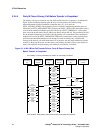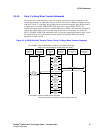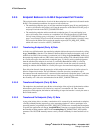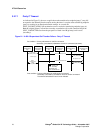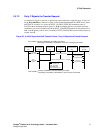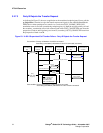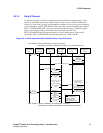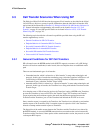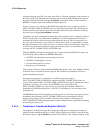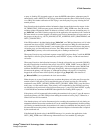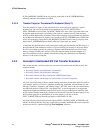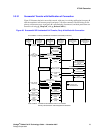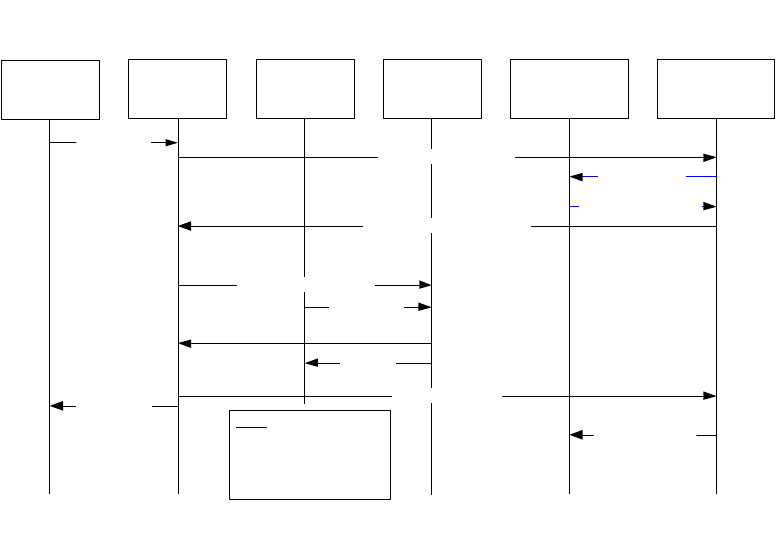
72 Dialogic
®
Global Call IP Technology Guide — November 2007
Dialogic Corporation
IP Call Scenarios
3.2.7.3 Party B Rejects the Transfer Request
As indicated in Figure 23, the user or application at the transferred endpoint (party B) may call the
gc_RejectXfer( ) function to reject the transfer request and signal via the ctInitiate.ReturnResult
APDU that it cannot participate in a transfer. As a result, the GCEV_INVOKE_XFER_REJ
termination event is received at transferring endpoint (party A). Both the original primary call and
the secondary, consultation call are left connected and in the GCST_CONNECTED state from the
perspective of both A and B (primary) and A and C (secondary); GCST_CONNECTED state from
the perspective of both A and B.
Figure 23. H.450.2 Supervised Call Transfer Failure - Party B Rejects the Transfer Request
A
(Transferring)
IP CCLib
B
(Transferred)
App
B
(Transferred)
IP CCLib
C
(Transferred To)
App
C
(Transferred To)
IP CCLib
A
(Transferring)
App
FACILITY(ctIdentify.Invoke)
GCEV_REQ_
INIT_XFER(CRNs)
gc_AcceptInitXfer(CRNs)
GCEV_ACCEPT_
INIT_XFER_FAIL(CRNs)
FACILITY(ctIdentify.ReturnResult)
gc_InvokeXfer
(CRNp, CRNs)
FACILITY(ctInitiate.Invoke)
Pre condition:
Primary call between A and B is connected.
Secondary (consultation) call between A and C is connected (not shown).
KEY:
CRNp - primary call
CRNs - secondary
(consultation) call
CRNt - transferred call
Post condition:
Primary call between A and B remains connected.
Secondary (consultation) call between A and C remains connected.
gc_RejectXfer
(CRNp, notAvailable)
GCEV_
REJ_XFER
(CRNp)
FACILITY(ctInitiate.ReturnResult = notAvailable)
GCEV_
INVOKE_XFER_
REJ(CRNp)
FACILITY(ctAbandon)



